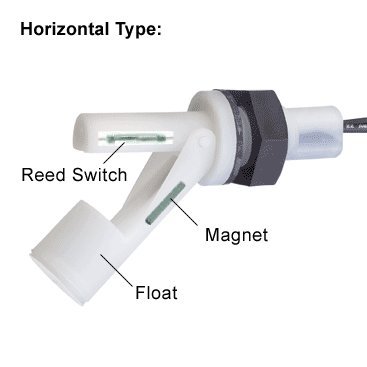Water Level Sensor

Water Level Sensor Function in Water Purification Systems
A water level sensor is a critical component in water purification systems, especially in setups with storage tanks or water reservoirs. Its primary function is to monitor and manage the water level to ensure efficient operation and prevent overflows or dry running of pumps.
Function of the Water Level Sensor
- Monitors Water Levels:
- Continuously tracks the water level in the storage tank or reservoir, ensuring the system operates within the desired range.
- Prevents Overflow:
- Detects when the tank is full and signals the system to stop water production or pumping, avoiding waste and potential damage from overflow.
- Protects Pumps:
- Detects when the water level is low and shuts down the pump to prevent dry running, which can damage the pump motor.
- Optimizes System Efficiency:
- Maintains consistent water levels, ensuring the purification system operates only when needed, which saves energy and prolongs the system’s lifespan.
- Supports Automation:
- Triggers automated functions such as starting or stopping the purification system, switching valves, or activating alarms when critical levels are reached.
Types of Water Level Sensors
- Float Sensors:
- Use a buoyant device that rises and falls with the water level, triggering a switch to signal the system.
- Conductivity Sensors:
- Measure water levels based on the conductivity of the liquid, often using probes at different heights.
- Ultrasonic Sensors:
- Use sound waves to measure the distance to the water surface, providing accurate and contact-free monitoring.
- Pressure Sensors:
- Measure the pressure at the bottom of the tank, which correlates with the water level.
Advantages of Water Level Sensors
- Prevents water wastage and damage from overflows.
- Protects equipment like pumps and filters from damage due to low water levels.
- Automates system operation for convenience and reliability.
- Ensures a steady supply of water by maintaining optimal tank levels.
Maintenance
- Regular Cleaning: Keep the sensor free of sediment, scale, or algae buildup to ensure accurate readings.
- Check Connections: Ensure wiring and connections are secure and functioning.
- Calibrate as Needed: Verify and adjust sensor accuracy periodically, especially for electronic sensors.
